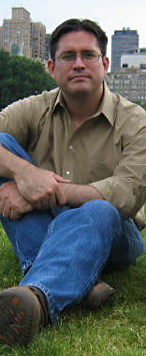Dr. Pablo H. Hennings-Yeomans
The MIT Technology Review article A Face-Finding Search Engine: A new approach to face recognition is better at handling low-resolution video said
“Today there are more low-quality video cameras — surveillance and traffic cameras, cell-phone cameras and webcams — than ever before. But modern search engines can’t identify objects very reliably in clear, static pictures, much less in grainy YouTube clips. A new software approach from researchers at Carnegie Mellon University could make it easier to identify a person’s face in a low-resolution video. The researchers say that the software could be used to identify criminals or missing persons, or it could be integrated into next-generation video search engines.Today’s face-recognition systems actually work quite well, says Pablo Hennings-Yeomans, a researcher at Carnegie Mellon who developed the system — when, that is, researchers can control the lighting, angle of the face, and type of camera used. ‘The new science of face recognition is dealing with unconstrained environments,’ he says. ‘Our work, in particular, focuses on the problem of resolution.’”
Pablo H. Hennings-Yeomans, Ph.D. is a Research Assistant in the Department of Electrical and Computer Engineering at Carnegie Mellon University (CMU) working under Professor Vijaya Kumar in the area of biometrics.
Most of his work at CMU has been in the area of biometric recognition, such as fingerprint, face, iris, and palmprint recognition (most of his publications are on palmprint and face). Biometrics is a pattern recognition (or pattern classification) problem that involves image processing, analysis and modeling, as well as design of robust classification algorithms using machine learning techniques. In his work he focuses on improving the reliability and performance of each biometric technology under different environments.
His current research is on super-resolution methods for recognition of low resolution faces. Super-resolution is about inferring the missing pixels lost when a high-resolution image is transformed to a low-resolution one. Super-resolution in his case involves learning features from large databases of high-resolution face images.
Recent work includes wavelet analysis of biometric imagery to find subspaces where classification performance is best for a specific classification algorithm. He designs wavelet packet trees that benefit advanced correlation filter classifiers. He also worked in palmprint recognition; he showed that a filter bank of advanced correlation filters is a very competitive classifier for this biometric.
Pablo coauthored Wavelet Packet Correlation Methods in Biometrics, Recognition of Low-Resolution Faces Using Multiple Still Images and Multiple Cameras, Simultaneous Super-Resolution and Feature Extraction for Recognition of Low Resolution Faces, Palmprint Recognition with Multiple Correlation Filters Using Edge Detection for Class-Specific Segmentation, Multimodal biometric fusion using multiple-input correlation filter classifiers, and Hiding phase-quantized biometrics: a case of steganography for reduced-complexity correlation filter classifiers.
Pablo earned his B.S. degree in Electronics and Communications Engineering (1998) and his M.S. degree in Electronic Systems (2002), both from the Tec de Monterrey (ITESM), Monterrey Campus, Mexico. He earned his Ph.D. in Electrical and Computer Engineering at Carnegie Mellon University, USA in 2008.
